Build a High-Performance PC: Key Components & Tips
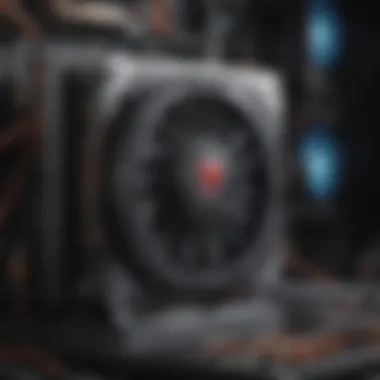
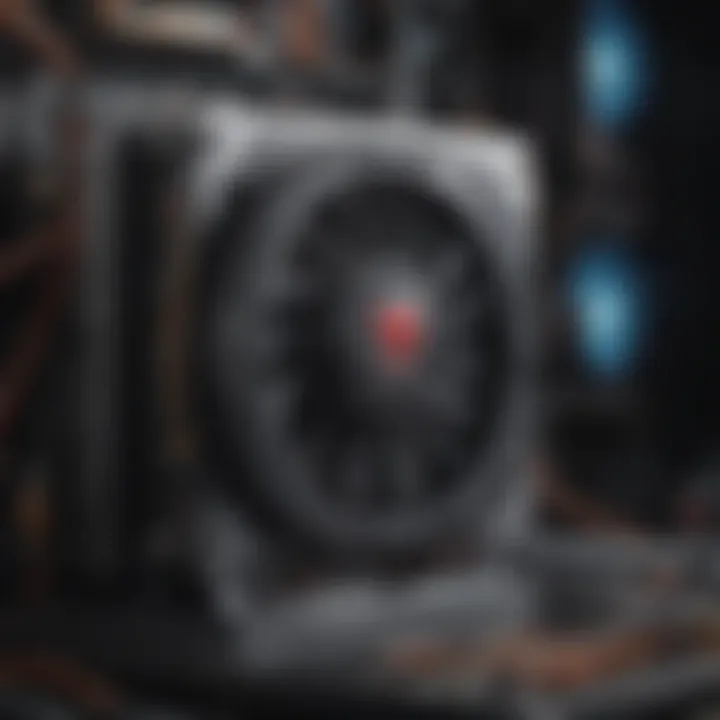
Overview
Intro to the topic of the article
Building a personal computer can be both an exciting and daunting task for many enthusiasts. The journey begins with a clear understanding of what components go into a solid build, the role each part plays, and how they work together. This guide offers an in-depth look into the process of assembling a reliable and efficient PC while balancing cost and performance. It targets not just seasoned builders but also newcomers who are eager to delve into the world of custom computers.
Brief background information
The importance of having a strong PC cannot be underestimated in today's tech-driven world. Whether for gaming, graphic design, software development, or just everyday tasks, having the right configuration boosts both productivity and enjoyment. A well-thought-out build not only helps in achieving the desired performance but also ensures longevity and adaptability for future upgrades.
Features & Specifications
A variety of components make up a PC, each with its own specifications that determine the overall performance. Understanding these specifications facilitates informed decisions:
- Processor (CPU): The central processing unit is the brain of the PC. Look for options like AMD Ryzen or Intel Core, as they offer various performance tiers suitable for different needs.
- Motherboard: This component connects all parts together. Choose a motherboard compatible with your chosen CPU and features like expansion slots and memory support.
- Graphics Card (GPU): Essential for gaming and graphic-intensive applications. NVIDIA and AMD offer powerful choices to fit different requirements.
- Memory (RAM): RAM affects how many applications can run simultaneously. At least 16GB is often recommended for general use; consider 32GB or more for intensive tasks.
- Storage: SSDs (Solid State Drives) offer speed, while HDDs (Hard Disk Drives) provide larger storage capacity at a lower cost. An optimal setup typically includes both.
- Power Supply Unit (PSU): A decent PSU ensures stable power delivery to components. It is advisable to select one with good efficiency ratings.
- Cooling System: Air or liquid cooling options help maintain optimal temperatures, which is important to prevent thermal throttling and damage.
Pros and Cons
When contemplating a PC build, weighing the pros and cons is crucial:
Pros
- Customization: Tailor every aspect to your needs, from gaming to workloads.
- Cost-effectiveness: Building a PC can often save money compared to pre-built counterparts.
- Upgradeability: Easily replace or enhance components over time.
Cons
- Time-consuming: Requires research and planning before assembly.
- Complexity: May pose challenges for those lacking technical knowledge.
- Warranty Concerns: Individual components may have separate warranties, unlike a full system warranty.
User Experience
From various customer reviews and personal accounts, users report a mix of satisfaction and triumph when successfully building their PCs. One user remarked, "Assembling my first PC felt like piecing a puzzle together. Each component had a role, and seeing it come to life was rewarding." Others highlight the challenges of choosing the right parts, with some stating, "Finding compatible components was the toughest part, but once I did, the assembly was straightforward."
Buying Guide
For potential buyers who are contemplating their first build, consider the following:
- Define your needs: Determine what you plan to use the PC for; gaming, work, or creative tasks.
- Research components: Look into current reviews and benchmarks to find the best products in your price range.
- Budget: Create a budget that includes all necessary components and peripherals such as monitors, keyboards, and mice.
- Compatibility: Ensure all components work together. Use online tools to check compatibility before purchasing.
Overall, building your PC can lead to a better understanding of technology and provide a personalized computing experience. Assembling a solid PC requires attentiveness and proper research, but the rewards are substantial.
Understanding the Purpose of Your Build
Building a computer is a significant undertaking that requires careful consideration of your specific needs and objectives. Understanding the purpose of your build is pivotal, as it guides the selection of each component, ultimately influencing performance, compatibility, and cost-effectiveness. Whether you aim to casually browse the internet, play high-end games, or work on demanding graphical projects, every decision should align with your primary usage scenario.
General Use
For general use, the typical tasks involve web browsing, streaming videos, and office applications like word processing and spreadsheets. This kind of build does not require powerful hardware. A modest CPU, such as an Intel Core i3 or AMD Ryzen 3, along with 8GB of RAM, would suffice. The storage could be a 256GB SSD, providing improved speed over traditional hard drives. Ensuring smooth performance while keeping costs manageable is essential in this segment, as the primary goal is efficiency, not high-end capabilities.
Gaming
Gaming demands a different approach. High-performance games require a robust CPU and a capable GPU, such as the NVIDIA GeForce RTX 3060 or AMD Radeon RX 6600. These components are vital in delivering the graphics and frame rates that gamers seek. Additionally, having at least 16GB of RAM enhances performance for modern titles. An SSD for the operating system and a secondary hard drive for additional storage can enhance loading times and overall gameplay experience. It’s important to carefully plan the thermal management of the system as well, as gaming can generate significant heat.
Content Creation
Content creation encompasses a wide range of activities, from video editing to 3D modeling. Such tasks necessitate a powerful setup to handle resource-intensive software effectively. A high-end CPU like the AMD Ryzen 9 or Intel Core i9 will be essential. Similarly, a professional-grade GPU is important for rendering graphics. Memory should be at least 32GB to facilitate multitasking and large project files. A substantial SSD for quick file access, paired with larger HDDs for data storage, is also crucial. In this case, choosing components that maximize productivity and efficiency is the main goal.
Workstation Needs
Workstation builds cater to professionals in fields requiring high processing power and reliability, such as engineering or scientific computing. Such setups typically involve multi-core processors, extensive RAM, and high storage capacities to manage large datasets. Components like the Intel Xeon or AMD Threadripper can work well for these applications. Selecting reliable hardware that prioritizes uptime and performance stability is key. Additionally, having aesthetic considerations such as cable management may also play a part, but functionality takes precedence.
To succeed in building a PC that meets your aims, identify and understand your tasks first. Each component should serve a purpose related to your specific needs.
Key Components of a Solid PC Build
Building a solid PC requires careful consideration of its key components. Each part plays a crucial role in overall performance, and understanding their significance can help you make informed decisions. Whether for gaming, professional work, or everyday tasks, selecting the right components affects speed, reliability, and future-proofing your setup.
Central Processing Unit (CPU)
The Central Processing Unit, or CPU, is often considered the brain of the computer. It processes instructions from both software and hardware, dictating how fast your computer can perform tasks. When selecting a CPU, consider factors such as core count, clock speed, and thermal design power (TDP). A higher core count can enhance multitasking, while a greater clock speed leads to faster task completion.
Graphics Processing Unit (GPU)
The GPU handles rendering images and video. It is particularly important for gaming and graphic-intensive applications. Choosing the right GPU involves balancing performance requirements and budget. Consider memory size and bandwidth, as these attributes influence performance during demanding tasks like gaming or video editing. Popular GPUs include the NVIDIA GeForce and AMD Radeon series, which offer a range of options for different performance levels.
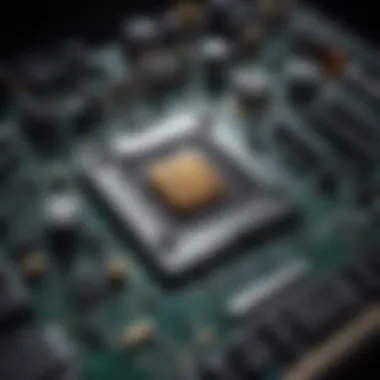

Motherboard Selection
The motherboard connects all components of the PC. Selecting the right motherboard involves ensuring compatibility with your CPU and other components. Focus on factors like chipset type, number of ports, and expansion slots. A motherboard with more features allows for future upgrades and customized builds, so consider your long-term needs carefully.
Memory (RAM)
Random Access Memory (RAM) temporarily stores data for quick access. More RAM means your system can handle multiple tasks at once without slowing down. For gaming or heavy applications, a minimum of 16GB is recommended, with options to expand. Look for RAM speed and latency in gigahertz (GHz) and nanoseconds (ns) to optimize performance further.
Storage Options
Storage is vital for keeping your data. You can choose between Hard Disk Drives (HDD) and Solid State Drives (SSD). SSDs offer faster read and write speeds, while HDDs may provide larger storage capacities at a lower price. Consider a combination of both for a balance between speed and storage capacity. Ensure the storage interface (like SATA or NVMe) fits your motherboard.
Power Supply Unit (PSU)
The PSU is essential for providing stable power to all components. It is crucial to select a unit with enough wattage to support your components, with room for future upgrades. Look for a PSU with high efficiency ratings, such as those certified by 80 PLUS. This will save energy and reduce heat generation, contributing to system longevity.
Cooling Solutions
Maintaining optimal temperatures is vital for component performance. You can choose between air and liquid cooling solutions. Air cooling is often less expensive and easier to install, but liquid cooling can provide more efficient heat dissipation. Ensure that your case can accommodate your chosen cooling system and maintain adequate airflow to prevent overheating.
PC Case Considerations
The PC case serves as both a protective shell and a foundation for your build. When choosing a case, consider size, compatibility with components, and airflow features. A well-designed case aids in cable management and maximizes cooling efficiency. Opt for modular designs that allow easier upgrades and expansions in the future.
Understanding each component allows for a thoughtful approach to building your PC. These parts not only determine performance but also influence the potential for future expansions.
Selecting the Right Components
Selecting the right components is crucial when building a solid PC. Each piece of hardware plays a specific role, and understanding how they interact can significantly optimize performance. This section focuses on three critical aspects: Compatibility Checks, Budgeting Your Build, and Researching Components. By paying careful attention to these elements, you will ensure that your build meets your needs without unnecessary complications.
Compatibility Checks
Compatibility between components is essential to a successful PC build. Each part must work seamlessly together to achieve optimal performance. When considering compatibility, check the following elements:
- CPU and Motherboard: Ensure your CPU fits the motherboard socket type. For example, Intel and AMD processors require different sockets.
- RAM Specifications: Check RAM speed and type to match what your motherboard supports. Consider if you're using DDR4 or DDR5, as mixing them isn't feasible.
- GPU and Power Supply: The Graphics Processing Unit must be compatible with the power supply unit. Look for the required wattage and connector types.
- Cooling Solutions: Make sure the size of the cooling system fits your case and is adequate for your selected CPU.
By confirming compatibility, you minimize the risk of component failure and performance issues during operation. Additionally, consider future upgrades while selecting components, ensuring that they will work together down the line.
Budgeting Your Build
Budgeting your build is an exercise in balancing performance with cost. Determine how much you are willing to spend and allocate funds to each component accordingly. Establishing a clear budget helps prevent overspending while ensuring you receive good value. Here are several points to consider when budgeting:
- Prioritize Needs: Identify which functions are most vital. If gaming is your goal, allocate more to the GPU than the CPU.
- Research Costs: Familiarize yourself with current market prices. Prices can fluctuate, so it is wise to stay informed ahead of purchases.
- DIY Savings: Some specialized components can be built with superior performance for less if you opt for DIY solutions, but this demands extra time and knowledge.
Adhering to a budget helps avoid unnecessary stress later on. It is advisable to maintain a small buffer in your budget for any unexpected expenses that may arise during the building process.
Researching Components
Thoroughly researching components is vital to ensure the best choices for your build. Knowledge about individual components can lead to better decisions. Key areas to focus on include:
- Product Reviews: Explore detailed reviews from tech enthusiasts on platforms like Reddit. Genuine user experiences provide insights into component reliability and performance.
- Comparative Analysis: Compare different brands and models. Look for benchmarking data to assess performance under various conditions.
- Manufacturer Specifications: Understand the specifications listed by manufacturers. This helps clarify what each part does and its capabilities.
Informed decisions will save time and improve the final performance of your PC. Taking time to research not only prepares you for successful assembly but also enhances troubleshooting post-build.
"Selecting the right components is a journey that requires patience and research. Taking shortcuts can lead to dissatisfaction and performance issues."
Assembly Process: Step-by-Step Guide
As the culmination of your planning and component selection, the assembly process is a vital step in creating a solid PC. Proper assembly not only ensures that your machine operates efficiently, but it also reduces the likelihood of issues that can arise from improper installation. This guide will walk you through each step in a logical manner, helping you to build your pc with confidence.
Preparing Your Workspace
A clean and organized workspace is crucial for a successful assembly experience. It minimizes distractions and allows for a more focused approach. Before you start, choose a flat surface, free from clutter. Make sure you are grounded to prevent static electricity damage to sensitive components. Using an anti-static wrist strap can be very beneficial.
- Clear your desk of unnecessary items
- Gather all tools, including a screwdriver and cable ties
- Make sure good lighting is available
Consider laying down an anti-static mat. This will protect the components from static discharge. Also, keep all components within easy reach, so you don't have to get up often.
Installing the CPU
Installing the CPU is a critical step. It is the brain of your system, so its placement must be precise.
- First, open the CPU socket lever on the motherboard.
- Align the notches on the CPU with the socket.
- Gently place the CPU into the socket without touching the pins.
- Secure the lever back down.

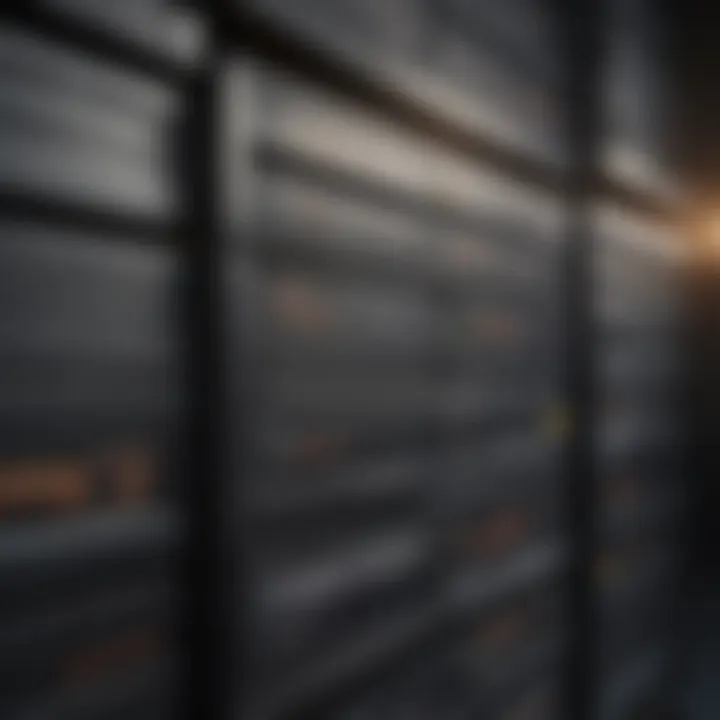
Take your time during this step to make sure everything is aligned correctly. Any mistakes here can lead to significant issues down the line.
Mounting the Motherboard
The motherboard is the backbone of your PC. It connects all components together.
- Begin by placing the standoffs in the case.
- Align the motherboard with the standoffs and secure it using screws.
It’s essential to ensure that the motherboard is seated correctly. Check for any contact with the case to avoid short circuits.
Adding RAM and Storage
Memory and storage are pivotal for a smooth computing experience. Install the RAM first.
- Open the RAM slots on the motherboard.
- Line up the notch on the RAM stick with the slot.
- Firmly press down until you hear a click.
Next, focus on storage. Whether it’s a hard drive or SSD, installation usually follows a similar method.
- For SSDs, plug them into the appropriate M.2 slot or install them in the drive bay for hard drives.
- Secure the storage devices with screws.
Connecting Power Supply
The power supply unit (PSU) is vital for delivering power to your components. It’s important to connect everything securely.
- Position the PSU in the case.
- Secure it with screws.
- Connect the 24-pin motherboard power cable and the 8-pin CPU power cable.
Ensure that each connection is snug. This prevents issues that arise from loose power connections during operation.
Installing GPU
The graphics processing unit is central for rendering images and video. The installation steps include:
- Locate the PCIe slot on the motherboard.
- Remove the appropriate expansion slot covers from the case.
- Align the GPU with the PCIe slot and push down until it clicks into place.
- Secure the GPU with screws to the case.
Check that all connections are firm. Proper seating of the GPU is crucial for performance in gaming or content creation applications.
Final Assembly and Cable Management
Once all components are in place, it’s time for final assembly. Neat cable management is not just for aesthetics; it can also improve airflow within the case.
- Tie cables along the edges using cable ties.
- Make sure no cables obstruct fans or components.
Finally, do a final check. Ensure everything is tucked away neatly before closing the case. This preparation will help during troubleshooting down the road.
Assembly is a careful balance of precision and patience. Avoid rushing through any of the steps to ensure a successful build.
Testing and Troubleshooting
Testing and troubleshooting are critical phases in the PC building process. They ensure that your system operates as intended after assembly. This section explores several important aspects of testing and troubleshooting that can help you maintain optimal performance.
Initial Boot Testing
After completing the assembly of your PC, conducting an initial boot test is essential. This process verifies if the system powers on and can successfully initialize components like the CPU, RAM, and GPU. During the first boot, keep an eye on the motherboard's diagnostic LEDs or beeper codes, as they provide immediate feedback on the health status of your components.
- Make sure all connections are secure.
- Observe the fans running and listen for unusual sounds.
- Take note of any error codes displayed on the motherboard, if applicable.
If the system fails to boot, methodically check each connection and component. Remove and reseat RAM sticks and graphics cards to ensure proper contact. Typically, the first boot is a moment of anticipation that can also be a source of stress. However, careful monitoring can guide you through potential problems.
Identifying Common Issues
In the realm of PC building, some issues often surface during or after assembly. Being able to identify these problems can save you time and frustration. Here are some common problems and their symptoms:
- No Power: If the PC does not turn on, ensure that the power supply unit (PSU) is properly connected and functional.
- No Display: If you encounter a black screen, it could indicate issues with the GPU or monitor connections.
- Boot Loops: If the system repeatedly restarts, it may relate to incorrect hardware installation or failing components.
By recognizing and categorizing issues effectively, you can navigate the troubleshooting process with more confidence. This phase is about diagnosing problems systematically rather than guessing, which can minimize errors.
BIOS Configuration
Once initial testing shows that your PC boots successfully, configuring the BIOS is the next step. The Basic Input/Output System (BIOS) controls the hardware and initializes the system at startup. Proper BIOS configuration is crucial for stability and performance.
During BIOS setup:
- Set the correct date and time.
- Enable XMP (Extreme Memory Profile) for RAM, if applicable. This setting can optimize memory performance.
- Adjust boot priority to ensure that the system starts from your desired drive.
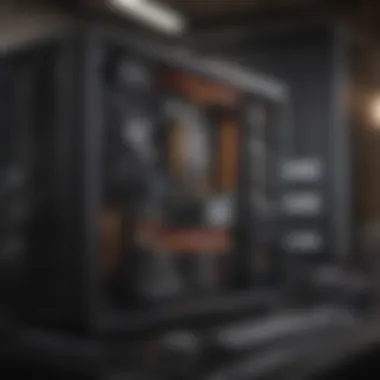
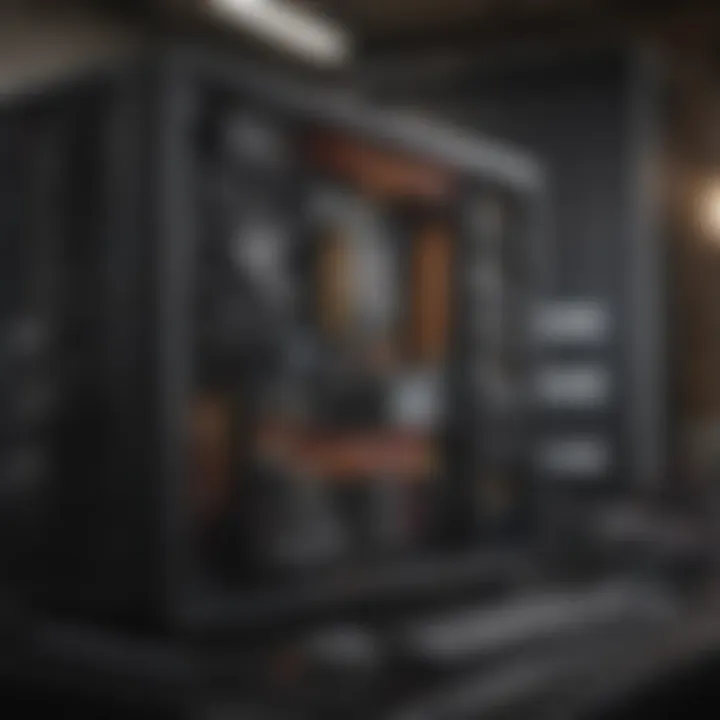
In addition, check for any firmware updates. Manufacturers often release updates that enhance security and performance. Ensuring your BIOS is current can contribute to the longevity of your system.
"A well-configured BIOS can make a significant difference in system performance and stability."
Testing and troubleshooting play a vital role in the journey of building a solid PC. Ignoring these steps can lead to potential problems down the line. By conducting thorough tests, identifying issues, and configuring BIOS correctly, you set a solid foundation for a high-performing system.
Post-Build Considerations
After assembling your PC, attention shifts to post-build considerations. This stage is critical for ensuring that your new machine operates at its best. Adequate preparation and follow-through make a significant difference in system longevity and performance.
Operating System Installation
The first task is to install an operating system. An OS is essential to utilize the hardware effectively. Options include Microsoft Windows, various Linux distributions, or macOS for Apple hardware. Windows is a common choice for gamers and general users, while Linux appeals to server and programming freelancers.
- Creating bootable media: You need a bootable USB drive for installation. This can be created using tools like Rufus or the Windows Media Creation Tool. Ensure it matches your OS choice.
- BIOS settings: Before installation, it may be necessary to tweak BIOS settings. Configuring boot order to prioritize USB or DVD drives is often required. Access the BIOS by pressing a designated key during startup, commonly Delete or F2.
- Installation process: Follow prompts to complete the installation. Partition your drive if necessary. Pay attention to disk formatting options; NTFS is commonly used for Windows.
Driver Updates and Software
Once the operating system is installed, the next step involves updating drivers. Drivers are like translators between your operating system and hardware components. They ensure that everything works cohesively.
- Identifying driver needs: Drivers for your motherboard, graphics card, and peripherals are essential. Manufacturer websites usually provide the latest updates. Avoid using outdated software as this can lead to performance issues or crashes.
- Updating software: Windows Update will often assist in installing most necessary drivers. Yet, checking for graphics card updates from NVIDIA or AMD directly is wise. Additional software, like antivirus, is crucial for security.
"Keeping your drivers updated not only enhances performance but also protects your system from vulnerabilities."
Benchmarking and Performance Testing
Benchmarking your PC helps evaluate its performance. This step is integral in understanding how well your components work together and if they meet your expectations.
- Tools for benchmarking: Several free and paid tools are available, such as 3DMark for graphics performance, Cinebench for CPU testing, and CrystalDiskMark for storage speed. These provide scores that indicate how your setup compares against others.
- Interpreting results: A high score indicates strong performance, but remember results should be analyzed in context. Consider usage scenarios; some systems might perform well for gaming but less so in content creation.
- Monitoring software: Finally, use tools like MSI Afterburner or HWMonitor to keep an eye on system temperatures and performance stats in real-time. This is especially vital during intensive tasks, ensuring thermal throttling doesn’t occur.
Maintaining Your PC
Maintaining your PC is a crucial aspect of ensuring that it performs optimally and lasts for many years. Proper maintenance can significantly enhance your system's lifespan, prevent common issues, and retain peak performance levels. Just like any complex machine, a personal computer requires regular care and attention to operate efficiently. This section reveals the critical components of maintaining your PC, focusing on the specific elements that need your attention.
Regular Cleaning and Upkeep
Regular cleaning plays a fundamental role in preserving the functionality of your PC. Dust accumulation can obstruct airflow and lead to overheating, potentially damaging sensitive components. Start by turning off your PC and unplugging it for safety. Use a microfiber cloth to wipe down surfaces, including the monitor, keyboard, and case exterior. For the internal components, compressed air is ideal for blowing dust off the fans and heat sinks. Ensure that you do this every few months to keep everything clean and functioning well.
- Key areas to focus on:
- Fans and heat sinks
- Power supply and vents
- Motherboard and connectors
Monitoring Performance
Performance monitoring allows you to identify and address issues before they escalate into serious problems. Tools like Task Manager or System Monitor can provide vital information about CPU usage, memory consumption, and disk activity. Consider employing software such as HWMonitor or MSI Afterburner to track hardware performance metrics. Keeping an eye on temperature thresholds is especially important to avoid overheating. If you notice unusual spikes in resource usage, it may point to failing components, requiring prompt investigation. Regular checks can help maintain a stable and efficient computing environment.
- Benefits of monitoring:
- Early detection of hardware failures
- Optimization of resource allocation
- Enhanced overall performance
Upgrading Components Over Time
An effective maintenance plan also involves evaluating the need for upgrading components as technology evolves. Software demands often increase, rendering older parts underperforming. Regularly assess your needs and budget for upgrades. Focus on areas like RAM, storage drives, and GPUs, as these can dramatically influence performance.
- Upgrade considerations:
- Identify bottlenecks in current performance
- Set a budget aligned with your computing needs
- Research compatibility with existing hardware
By following these strategies for maintaining your PC, you will ensure that your investment in technology continues to serve you well. Remember that a proactive approach pays dividends, keeping your system in top shape and ready for any task you throw at it.
"Regular maintenance is the key to a lasting and high-performing PC."
For additional resources on PC maintenance, you coud visit Wikipedia or seek professional advice in forums such as Reddit.
Ending: Crafting Your Ideal Build
Constructing a solid PC goes beyond mere assembly; it requires a thoughtful approach to ensure performance, longevity, and adaptation to future needs. Each component plays a pivotal role, and understanding their function allows builders to develop a well-rounded system tailored to specific goals. This section crystallizes the importance of aligning your ambitions with the right choices and future-proofing considerations for optimal results.
Reflecting on Your Build Goals
Before diving into the nuts and bolts, it aids to reflect on your primary motives for building a PC. Are you aiming for high-end gaming performance, multitasking for work, or perhaps a blend of both? Identifying these objectives helps in selecting appropriate components. For example, if gaming is the focus, investing in a robust GPU, like the NVIDIA GeForce RTX series, is crucial. Conversely, if content creation is the goal, prioritize multi-core performance in your CPU, such as the AMD Ryzen 9 series. Think about how often you might upgrade or change your needs over time.
Besides performance, consider the aesthetic aspect as well. Will you be incorporating RGB lighting? What about the case design? Prioritizing these factors contributes to satisfaction post-build, ensuring you are not only functional but also pleased with the visual appeal of your setup.
Future-Proofing Your Setup
Future-proofing is about making educated decisions today for tomorrow's requirements. Technology evolves rapidly. A component that feels cutting-edge now may seem outdated in just a year or two. To combat this, focus on buying slightly above your current needs. For instance, opt for more RAM than you currently require. This additional capacity can accommodate future software demands without necessitating an upgrade immediately.
Moreover, consider motherboards that support the latest standards – such as PCIe 4.0 or 5.0. This decision ensures compatibility with high-performance GPUs and faster storage solutions as they become available.







